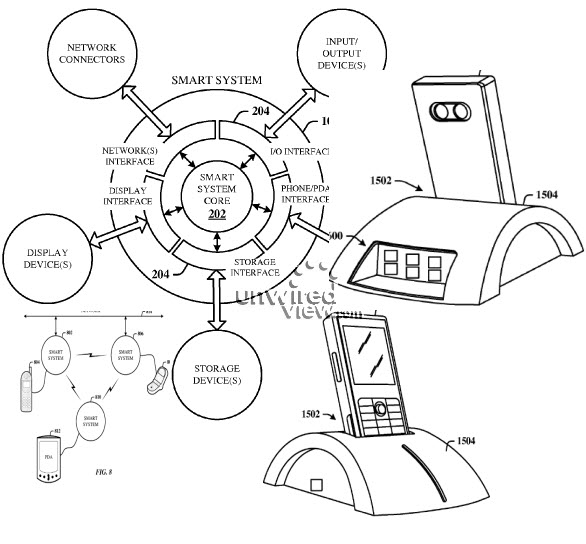Microsoft patents interface to transform phone into PC

In lock-step with CEO Steve Ballmer's promise at CES 2009 to bring convergence to the PC, phone and TV, Microsoft has patented a way to replace your PC with a smartphone...or rather, to turn a smartphone into a "fully-fledged" PC with hard drive, mouse, display, and so forth.
The solution comes in a form of a docking cradle for a mobile phone that connects to LAN, external HDD, keyboard, mouse, display and any other peripheral you like, and comes in the form of a patent application entitled “Smart interface system for mobile communication devices” and dated January 22, 2009.
Patent porn time, via UnwiredView:
It's a bit more than a phone cradle, though, and contains its own CPU, memory and embedded OS (hmm?) that handles communication between the phone and peripheral devices.
The embedded OS is the catalyst for operation: It manages drivers for peripherals and simulates a computer for their operation. It also intercepts signals coming from the docked handset and translates them so that the peripheral can comprehend them (and vice-versa).
So what kind of peripherals are we talking about, here? Pretty much anything:
… televisions (TVs), monitors, displays (e.g., LCD, LED, etc.), projectors, mice, keyboards, gesture input systems, touchpads, touch screen displays, and other human interface devices (HIDs). The peripheral devices 108 can also include printers, cameras, audio and audio processing systems (e.g., speakers, electronic music systems, etc.), image/video and image/video processing systems (e.g., video cameras, digital cameras, scanners, etc.), and storage systems (e.g., USB (universal serial bus) drives, IEEE 1394 drives, external drives, flash drives, etc.), for example. The networks 110 include the IEEE 802 family of wire and wireless networks. The other systems 112 can include set-top-boxes (e.g., cable TV boxes), high-definition systems, home theater systems, security systems, sensor systems, sensor systems (e.g., temperature, humidity, pressure, time, etc.)
It's like tethering your smartphone to the nth degree, if you will -- not bad, considering the processing power of current and future smartphones.
As a wise tech sage once asked me, however: "But what of the software?"
Windows Mobile, anyone?
